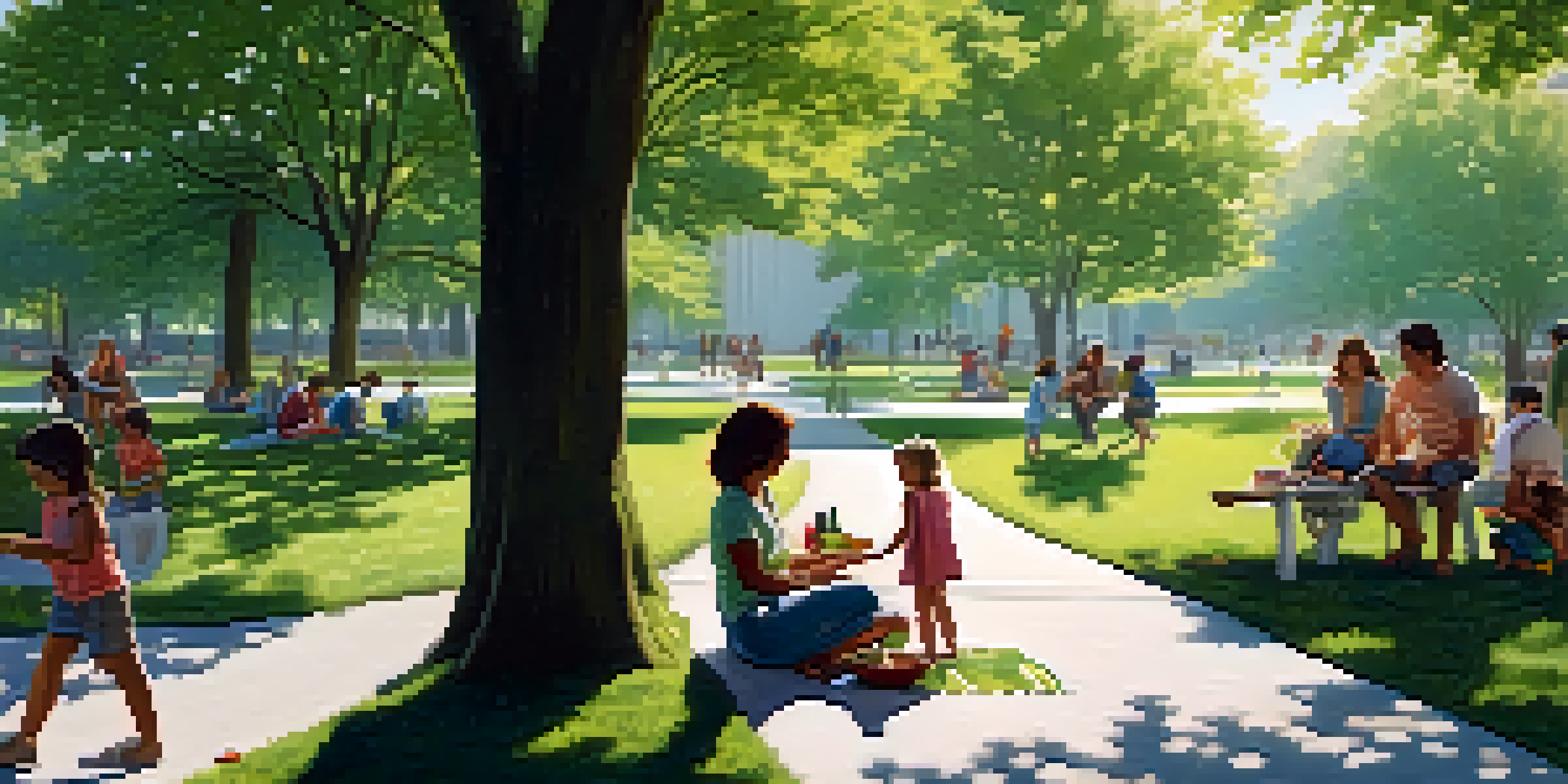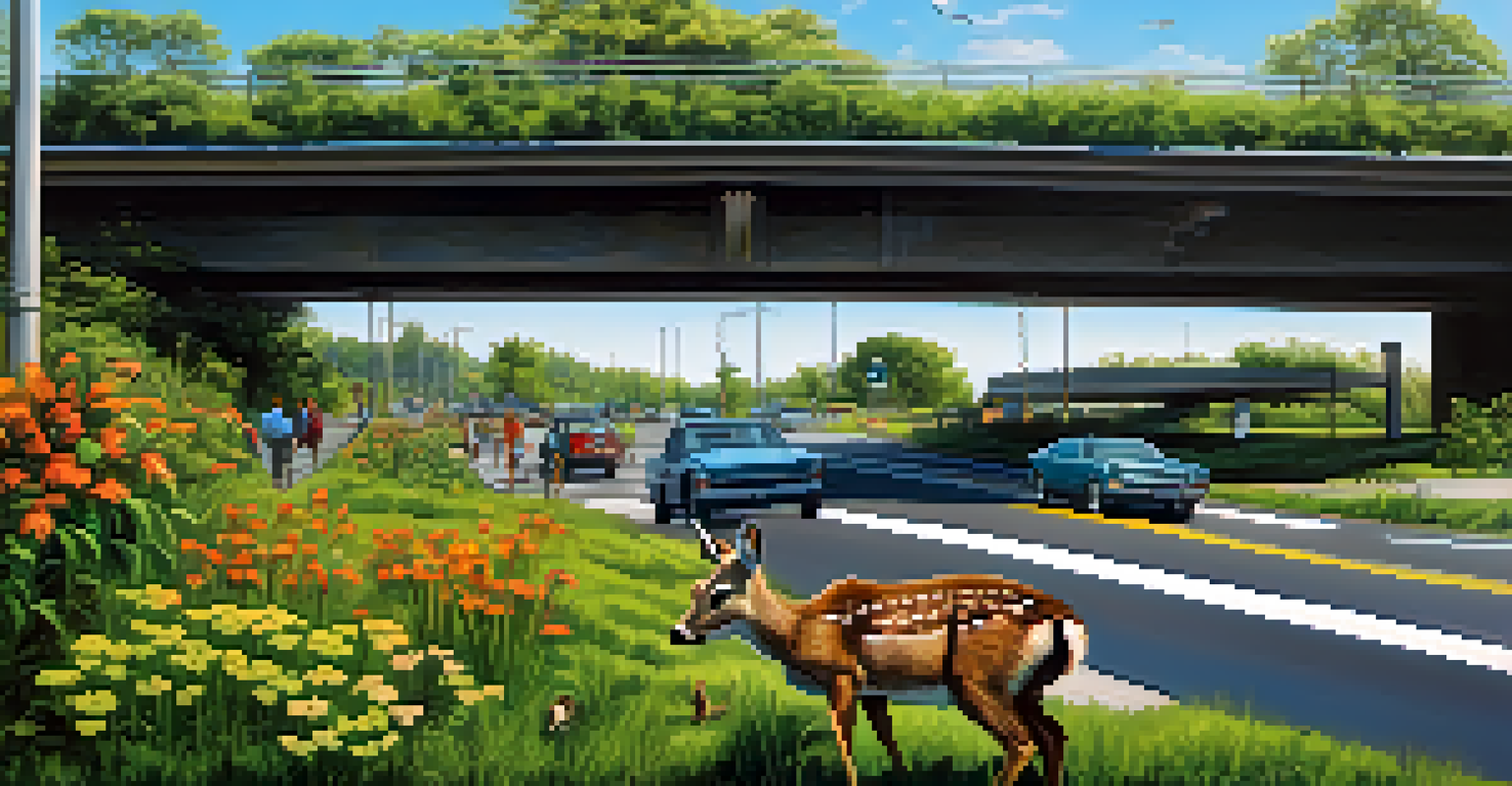Wildlife Rehabilitation: The Impact of Urban Development

Understanding Wildlife Rehabilitation and Its Importance
Wildlife rehabilitation is the process of caring for injured, sick, or orphaned animals with the goal of returning them to their natural habitats. This practice plays a crucial role in preserving wildlife populations and biodiversity. By providing medical care, nutrition, and shelter, rehabilitation centers help ensure that these animals can thrive once they are released back into the wild.
The greatest threat to our planet is the belief that someone else will save it.
However, the importance of rehabilitation extends beyond just individual animals. It contributes to ecosystem health, as every species plays a unique role in maintaining the balance of their environment. For instance, rehabilitated birds can help control insect populations, while injured mammals can contribute to seed dispersal once they recover.
As urban development expands, the need for wildlife rehabilitation grows, but so do the challenges. With more construction and less natural habitat, understanding this relationship is essential in addressing the needs of wildlife and the impact of human activity on their survival.
Urban Development: A Double-Edged Sword for Wildlife
Urban development often leads to habitat loss, fragmentation, and increased human-wildlife conflicts. As cities expand, many natural habitats are destroyed or altered, leaving wildlife with fewer spaces to thrive. This not only affects the animals residing in these areas but also disrupts the ecological balance that supports them.

For example, species like deer and raccoons may adapt to urban environments, but their presence can lead to increased vehicle collisions and property damage. Wildlife rehabilitation centers often receive these animals, highlighting the complex relationship between urban growth and wildlife survival. The influx of injured animals into these centers is a direct consequence of urbanization's impact on their habitats.
Wildlife Rehab Supports Ecosystem Health
Wildlife rehabilitation is crucial not only for individual animals but also for maintaining the balance of ecosystems affected by urban development.
On the flip side, urban areas can provide unique opportunities for wildlife rehabilitation. Communities may become more engaged in conservation efforts, leading to increased awareness and support for rehabilitation centers. This duality of urban development showcases the challenges and opportunities that arise when balancing human needs with wildlife conservation.
The Role of Wildlife Rehabilitation Centers in Urban Areas
Wildlife rehabilitation centers are often the first line of defense for animals affected by urban development. These centers provide essential services such as medical treatment, public education, and community outreach programs. By addressing the needs of injured wildlife, they help mitigate some of the negative impacts of urbanization.
We won’t have a society if we destroy the environment.
In urban settings, these centers can also serve as educational hubs, teaching residents about local wildlife and the importance of coexistence. For instance, programs that educate the public about how to safely handle wildlife encounters can reduce conflicts and foster a greater appreciation for nature. This engagement is vital for promoting community involvement in conservation efforts.
Moreover, urban rehabilitation centers often collaborate with local governments and organizations to influence policies that protect wildlife. By advocating for green spaces and wildlife corridors, these centers play a crucial role in shaping urban development practices that consider the needs of both people and wildlife.
The Importance of Green Spaces in Urban Development
Green spaces—parks, gardens, and preserved natural areas—are crucial for wildlife in urban environments. They provide essential habitats for various species and help maintain ecological balance within cities. Incorporating green spaces into urban planning can offer refuge for wildlife and reduce the adverse effects of habitat loss.
Moreover, these areas can serve as vital corridors that connect fragmented habitats, allowing animals to move safely between different environments. For instance, urban parks can act as stepping stones for birds and small mammals, enabling them to access food and breeding sites that might otherwise be cut off by development.
Urban Areas Present Unique Challenges
As cities expand, wildlife face habitat loss and increased conflicts with humans, emphasizing the need for effective rehabilitation and conservation strategies.
Enhancing urban areas with green spaces not only benefits wildlife but also improves the quality of life for residents. These spaces promote physical activity, mental well-being, and community interaction, creating a harmonious balance between human needs and wildlife conservation.
Innovative Solutions for Wildlife and Urban Development
As urban development continues to grow, innovative solutions are emerging to support both wildlife and human populations. For instance, wildlife crossings—structures that allow animals to safely traverse roads—are being integrated into urban planning. These crossings help reduce roadkill while ensuring that wildlife can access essential habitats.
In addition, cities are beginning to adopt 'wildlife-friendly' building practices that incorporate natural elements into architectural designs. Green rooftops and vertical gardens are just a couple of examples of how urban buildings can support wildlife habitats while enhancing the aesthetic appeal of the city. These solutions demonstrate that development and conservation can coexist.
Collaboration between urban planners, wildlife experts, and community members is key to creating sustainable solutions. By working together, they can design urban environments that prioritize both human and wildlife needs, ensuring a healthier ecosystem for all.
Public Awareness and Involvement in Wildlife Rehabilitation
Public awareness plays a significant role in the success of wildlife rehabilitation efforts. When communities understand the challenges faced by local wildlife due to urban development, they are more likely to support conservation initiatives. Engaging people through educational workshops, social media campaigns, and volunteer opportunities can foster a sense of responsibility towards wildlife care.
Additionally, citizen science projects can empower individuals to contribute to wildlife monitoring and rehabilitation efforts. These projects often involve community members in data collection, helping to track local wildlife populations and their needs. By involving the public, rehabilitation efforts can become a community-driven initiative that demonstrates the collective impact of caring for wildlife.
Green Spaces Benefit People and Wildlife
Incorporating green spaces into urban planning is essential for providing habitats for wildlife while enhancing the quality of life for residents.
Ultimately, raising awareness about wildlife rehabilitation encourages a culture of coexistence between humans and animals. As more people become informed and involved, the likelihood of successful rehabilitation and conservation efforts increases, creating a positive feedback loop for wildlife and urban environments.
Future Prospects: Balancing Development and Wildlife Needs
Looking ahead, the challenge will be to balance urban development with the needs of wildlife. As cities continue to grow, it will be essential to implement sustainable practices that protect natural habitats and promote coexistence. This requires a commitment from urban planners, government officials, and the community to prioritize wildlife-friendly initiatives.
Emerging technologies, such as smart city solutions, can aid in this balance. These innovations can help monitor wildlife activity, assess habitat health, and even predict potential human-wildlife conflicts. By leveraging technology, urban areas can become more responsive to the needs of local wildlife.

Ultimately, the future of wildlife rehabilitation in the context of urban development depends on collaboration, innovation, and a shared vision for a more sustainable coexistence. By recognizing the importance of wildlife and their habitats, we can create urban environments that support both people and nature.